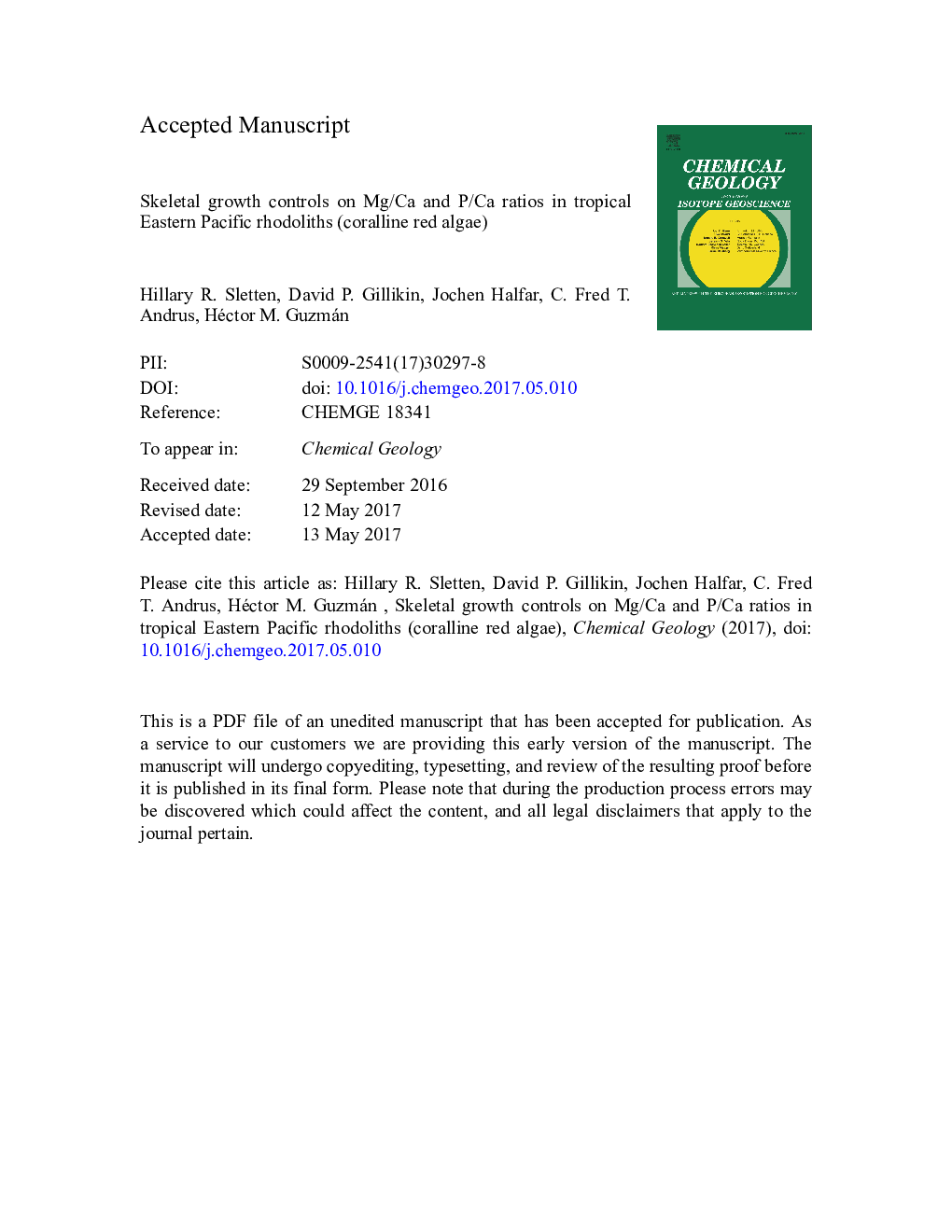| Article ID | Journal | Published Year | Pages | File Type |
|---|---|---|---|---|
| 5782623 | Chemical Geology | 2017 | 34 Pages |
Abstract
The Mg/Ca ratios of non-geniculate coralline red algae (CA) are often assumed to be solely dependent on the sea surface temperature (SST) in which they grow, suggesting that they are ideal proxies for SST reconstruction. Mg/Ca ratio cyclicity is also commonly used as a marker for annual growth band identification in many CA species. However, other controls on elemental uptake such as light, calcification mechanisms, and vital effects may control elemental ratios (e.g. Mg/Ca and P/Ca) in certain genera or species of CA, thus complicating the use of Mg/Ca and P/Ca ratios as a proxy source for SST and paleo-environmental reconstructions. Here we present evidence showing that the Mg/Ca and P/Ca ratio cyclicity in unattached living tropical Lithothamnion sp. (n = 8) rhodoliths correlate > 90% to the number of sub-annual growth bands (n = 1 to 20) formed during a 172-day controlled growth experiment and not to temperature or other environmental conditions (e.g. salinity, pH, etc.). This pattern is also observed in the wild, pre-experimental growth further supporting that the bands are not annual. The Mg/Caalga (R2 = 0.67; p-value = 0.013; n = 8) and P/Caalga (R2 = 0.64; p-value = 0.018; n = 8) significantly correlate to skeletal extension during the experiment. This work has implications for trace elemental proxy development using CA as well as the influence of skeletal extension on elemental incorporation in biogenic carbonates, particularly rhodoliths of Lithothamnion sp. from the Gulf of Panama, Panama.
Keywords
Related Topics
Physical Sciences and Engineering
Earth and Planetary Sciences
Geochemistry and Petrology
Authors
Hillary R. Sletten, David P. Gillikin, Jochen Halfar, C. Fred T. Andrus, Héctor M. Guzmán,
